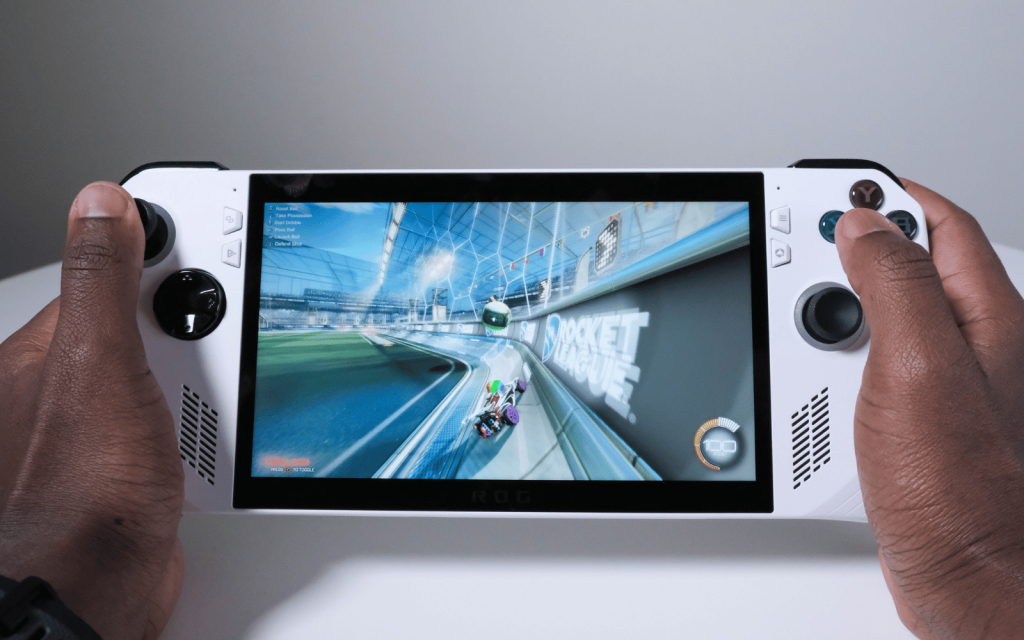Now that Asus has announced the local price and availability of the ROG Ally, we’re allowed to share our initial thoughts on the company’s brand-new handheld device. Pre-orders have opened and are available through Asus’ online store or Makro if you absolutely must have one as soon as possible.
But blind pre-orders are almost always a bad idea. Being the early bird might net you the worm, but you could also end up having to flee for your life from a cat. Ever think about that?
Applied to a handheld gaming console, you won’t have to wait as long to get one but are you comfortable parting with R16,000 for something that might not meet your expectations?
Asus’ handheld gaming console debut
This is the first attempt at making a device of this kind by Asus so there were always going to be some teething issues. We’re sure many years of making gaming laptops and tablets have worked in its favour, but we can’t all be early adopters. Especially not with electronic devices in this country (and the economy) doing their best impression of a ‘People wiping out in slo-mo’ video. That’s where first-impression pieces like this come in. Here’s what we thought after playing with it for a day.
Once we took it out of its box, Asus’ marketing material of how long it spent working on the design of the ROG Ally began to make more sense. The all-plastic construction felt sturdy although we would’ve liked to see some rubber or silicon grips, especially if you’re going to be holding it over your face while lying down.
In a perfect world, Asus would’ve plonked one of its stellar OLED screens in the ROG Ally. Sadly, this is not such a world, and considerations for battery life were favoured. Having said that, the 7in 1080p LCD touchscreen here is no slouch. It delivers smooth and responsive visuals whether gaming or streaming Netflix with brightness never being an issue even in direct sunlight. It supports a 120Hz refresh rate although you probably won’t see that in most games.
Gaben might have a problem
An AMD Ryzen Z1 Extreme APU (Accelerated Processing Unit) is doing the heavy lifting, including running a full-fat version of Windows 11. There’s 16GB of LPDDR5 RAM and 512GB of SSD storage. Modern game sizes being what they are you’ll have to limit yourself to a few of your favourites. Thankfully, you do get the option to expand that via the microSD card slot.
To evaluate gaming performance, we tried a few different titles including Cyberpunk 2077, God of War, Fortnite, Apex Legends, Rocket League, and Factorio and we were rather impressed most of the time. We’ll save our findings for the full review but we will say that, with a bit of tweaking, you should have an enjoyable time in pretty much any title.
With Windows 11 as the operating system, you aren’t limited to only playing games from one company or marketplace like you are with the Switch or Steam Deck. It also means you can (mostly) run programs like you normally would on any Windows PC.
 As impressive as it may seem, the ROG Ally is by no means perfect. During our first day with it, the two biggest gripes we had related to the control scheme and battery life.
As impressive as it may seem, the ROG Ally is by no means perfect. During our first day with it, the two biggest gripes we had related to the control scheme and battery life.
As far as physical controls go, the ROG Ally uses an asymmetrical Xbox controller scheme and features two programable back paddles. But Windows was never designed to be used with an Xbox controller. The touchscreen definitely helps in that regard but we found connecting a wireless mouse and keyboard to be the best option for getting anything outside of gaming done.
You might also have to spend some time figuring out the best control scheme inside whatever you’re playing. We didn’t have an issue in most of the games we tried. But, hypothetically, if you wanted to install a Switch emulator so you could play a leaked version of a certain hotly anticipated game in front of someone who had to wait for launch day to receive their code, you won’t have it so easy in this totally hypothetical situation. We can’t really blame the ROG Ally for that though.
Our other concern was battery life. The maximum 8-hour battery life from the internal 40Wh cell that Asus claims is ambitious at best. Real-world performance varies depending on what you’re doing, the power profile you’re using, and, if you’re playing games, the visual settings. We’ll elaborate on this in our full review but you should temper your expectations.
Asus ROG Ally initial verdict
On paper, it doesn’t really matter which way you look at it. The ROG Ally outclasses the locally available competition in almost every regard. In practice, it’s a little more complicated than comparing numbers, especially if you’re talking about the number on the price tag. Based on our time with a pre-production sample and considering the ROG Ally’s local price and where it fits in the South African market, we’re tending to lean in its favour. As far as first attempts in new product segments go, we’ve certainly seen worse. Stay tuned for the full review.




